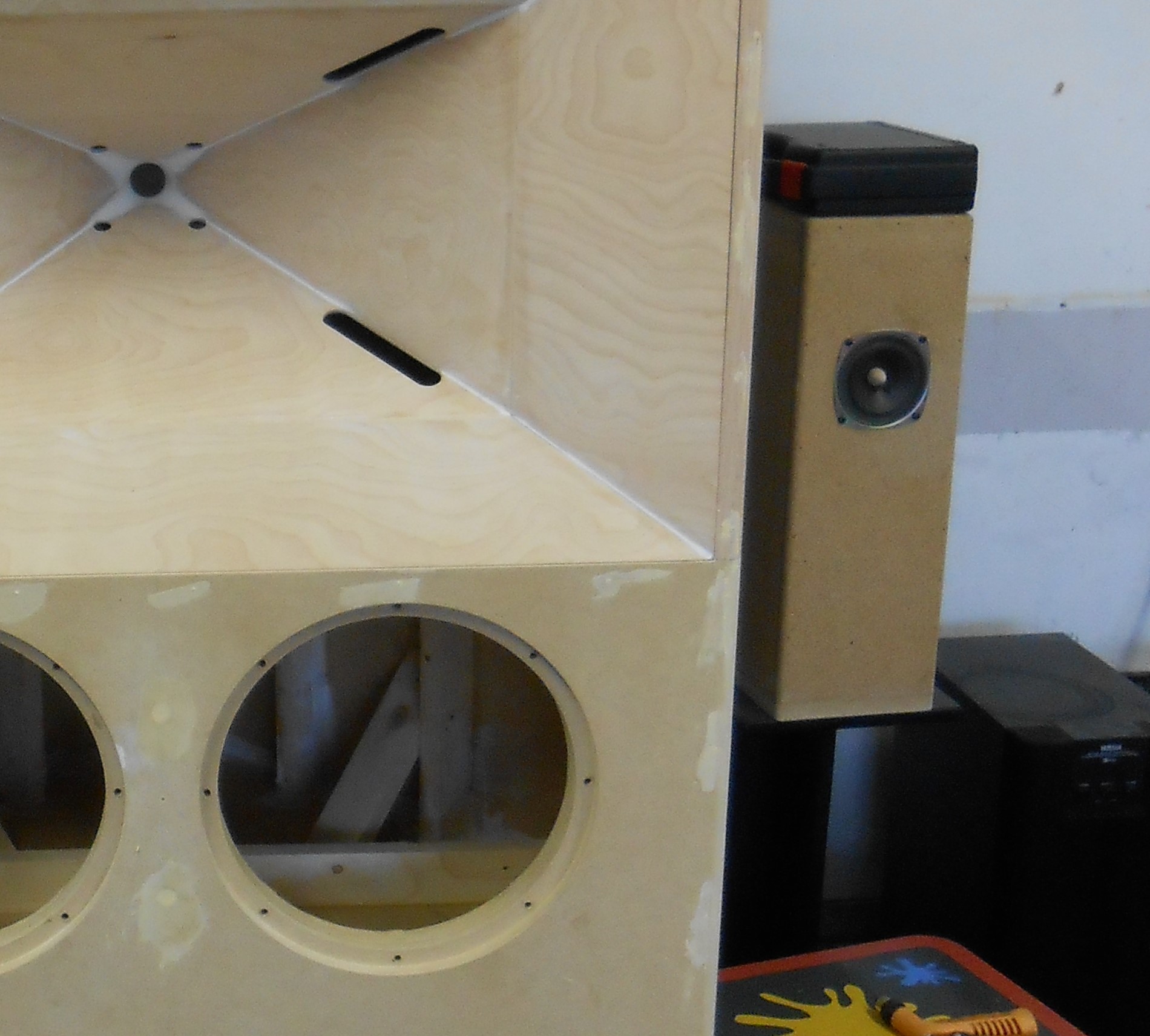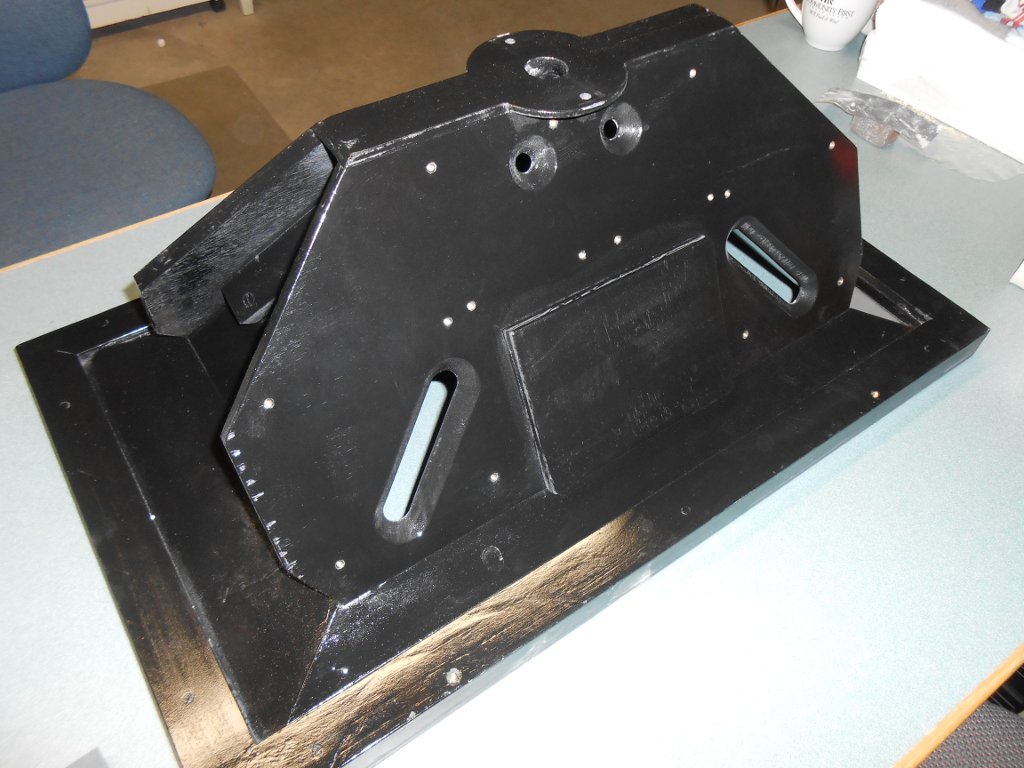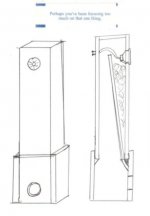Has anyone experimented with the differences of tl length vs port length in terms of output?
I believe you can tune to the same frequency by having a long line and "small" port or a shorter line with a larger port. Taken to the extreme you'd end up with a bass reflex design, but what are the qualitative differences?
Sent from my iPhone using Tapatalk
I believe you can tune to the same frequency by having a long line and "small" port or a shorter line with a larger port. Taken to the extreme you'd end up with a bass reflex design, but what are the qualitative differences?
Sent from my iPhone using Tapatalk
This is a good question and I think we all should at some point in our TL building careers do an experiment with two boxes of equal volume/vents and one with stout golden ratio proportions for a conventional bass reflex and another longer and at least 30in long with the same port on the end and listen for ourselves. Everyone probably has such a BR box already, so then build the AMLTL variant and have a listen. I think if the driver has the appropriate TS parameters, it will sound better due to better cone motion control for lower distortion, slightly better deeper extension if Qts was in 0.5 to 0.6 range, less boominess ( that is port output works over wider range ). But for best results one should simulate in a model.
72in long TL has quarter wave 47Hz and that is long. Did you fold it?
Yes, folded in half with the driver located towards the top on the side with less volume, the vent located on the rear an inch from the bottom. Despite some dips and peaks around 100-200hz they were amazing in the difference from the plastic boxes they came out of, a complete transformation in having such a big sound from such small drivers. I tired a few other mods - extending the bottom about a foot and opening the mouth to the front. This resulted in much more output in the lower mids but the FR started to drop at around 60hz. I ended up chopping them off at around 21" height and placing the vent on the backside. They still have good bass response in the smaller box. The other mod that improved these was phase plugs. REW indicates a slight improvement in impulse response and less distortion, however main thing I noticed is the high frequency dispersion is noticeably better. This was just my fun in tinkering around with some scrap wood to get a set of speakers that I could enjoy listening to in the garage while I worked on the synergy horns. Although it put me behind schedule to complete the horns this summer, it was a lot of fun messing around with.
Last edited:
This wouldn't happen to be your "garage" speaker is it? (on the right in th background with a cool wooden phase plug, so not the synergy - which, by the way is one of the best implementations I have seen).

Painted:

Folks really should check out your "Dreadnoughts": http://www.diyaudio.com/forums/multi-way/280761-synergy-horn-build-thread-dreadnoughts.html

Painted:

Folks really should check out your "Dreadnoughts": http://www.diyaudio.com/forums/multi-way/280761-synergy-horn-build-thread-dreadnoughts.html
Last edited:
This wouldn't happen to be your "garage" speaker is it? (on the right in th background with a cool wooden phase plug, so not the synergy - which, by the way is one of the best implementations I have seen).

Painted:

Folks really should check out your "Dreadnoughts": http://www.diyaudio.com/forums/multi-way/280761-synergy-horn-build-thread-dreadnoughts.html
Yeah, whats left of it after I chopped it. Dayton USB mic case sitting on top, coincidentally almost the exact size.
Why did you chop it?
Mostly for experimentation, I also wanted to make them easier to move around, I already smashed my hand on the door jam carrying them in and out from the patio. They also work well on the stands I built for some other speakers I tore apart.
I really like these. Sound great, and the building is an ease. Used the "Accidental" method and am very pleased wit the sound. Thanks to XRK for making the design process available to a newbie like me. I realize that I may get crucified for the design choices. I'm just sick of black and silver as the only choices available in the general market. Speakers can also match the aesthetics of a room just like all of the other pieces. These are aimed at the industrial decor folks.
Finish is a washed gray chalk paint. Speaker grills are copper mesh with a vinegar/salt patina process.
Plans are complete if you like them. I always give back gratefully to this forum because of all of the help I have received.
JHutka
This looks like a great shape for my PC speakers I have been trying to find a practical design for recently. I don't have the modelling software, can someone work out the dimensions for the same design enclosure with a 30" TL for the Vifa TC9FD would be about 16sq in. CSA from memory. Or can I just scale it on pencil and paper? I think the Vifa port tube is about 1.85"dia and 3"long in other designs.
I really like these. Sound great, and the building is an ease. Used the "Accidental" method and am very pleased wit the sound. Thanks to XRK for making the design process available to a newbie like me. I realize that I may get crucified for the design choices. I'm just sick of black and silver as the only choices available in the general market. Speakers can also match the aesthetics of a room just like all of the other pieces. These are aimed at the industrial decor folks.
Finish is a washed gray chalk paint. Speaker grills are copper mesh with a vinegar/salt patina process.
Plans are complete if you like them. I always give back gratefully to this forum because of all of the help I have received.
JHutka
Somehow I missed this post from months ago because it landed in between some rapid posts over another topic. Thanks to last post that brought it up - looks great! I like the folded implementation and use of standard port tube. Cool aesthetic too. The W4 Bamboo driver is an excellent choice and has a smooth natural sound. One thing to try is to add something (putty) to smooth the lip on the sides around the driver (I know it holds the grill in place). But that causes diffraction and ripples in response.
Nice work Jhutka!

This looks like a great shape for my PC speakers I have been trying to find a practical design for recently. I don't have the modelling software, can someone work out the dimensions for the same design enclosure with a 30" TL for the Vifa TC9FD would be about 16sq in. CSA from memory. Or can I just scale it on pencil and paper? I think the Vifa port tube is about 1.85"dia and 3"long in other designs.
That's the point about this AMLTL method, just scale it - and follow practices of putting driver at about 1/3rd from closed end, stuffing, and the length of 30in is fine. Adjust volume via CSA and pick appropriate port via BR model.
Has anyone experimented with the differences of tl length vs port length in terms of output?
A long port causes problems with dips and peaks. However I use this in my HideAway sub where this is not a problem.
Bjørn
I've been reading this thread, to try and understand how the math works.
thank you for all your explanations. I've been experimenting for 40 years with port lengths and cabinet designs and just recently found WINISD.
I'm a little confused on where the Vs.(box volume) ends and the port length begins. seems like in a TL design the port is incorporated in the box cu ft. where a vented port can be an external tube.
As to the above question, the longer the port the lower the resonance. But, quieter output, unless the port dia. is very large.
(obviously, my apologies for such a layman's observation). for years its been hit or miss on many designs and most of my real successful cabinets were 60% luck.
Its good to see your technical understanding and detailed explanations.
I hope to grasp some real knowledge on why or why not many of my projects work. thanks again.
thank you for all your explanations. I've been experimenting for 40 years with port lengths and cabinet designs and just recently found WINISD.
I'm a little confused on where the Vs.(box volume) ends and the port length begins. seems like in a TL design the port is incorporated in the box cu ft. where a vented port can be an external tube.
As to the above question, the longer the port the lower the resonance. But, quieter output, unless the port dia. is very large.
(obviously, my apologies for such a layman's observation). for years its been hit or miss on many designs and most of my real successful cabinets were 60% luck.
Its good to see your technical understanding and detailed explanations.
I hope to grasp some real knowledge on why or why not many of my projects work. thanks again.
Technically the box and port volumes are separate. But for these kinds of boxes, the volume taken up by the port is insignificant relative to box volume so I don't account for it. In the real comprehensive model I use in Akabak, it is accounted for but as you can imagine, won't change things much. For a speaker like a wrap around dual port 6th order band pass sub, a 22in long x 1in deep x 14in tall port - the volume of the port can be almost 1/3 of the box volume so definitely needs to be accounted for.
The math only works for AMLTL is driver Qts is moderate and not small (below 0.4).
The math only works for AMLTL is driver Qts is moderate and not small (below 0.4).
Hey xrk,
Just to check. I'm planning for a pair of w3-871 in a castle arrangement, 12L enclosure tuned for 75hz, 90 cm tall.
Given the nature of accidental mltl should I try tune a little lower or stick with the winisd sim?
Cheers
Just to check. I'm planning for a pair of w3-871 in a castle arrangement, 12L enclosure tuned for 75hz, 90 cm tall.
Given the nature of accidental mltl should I try tune a little lower or stick with the winisd sim?
Cheers
What happens to the bass extension if you use multiple drivers in an AMLTL ?
eg. If you make a tall tower, and put 4 x 3" drivers in a line array, to get some more volume and power handling. I am not worried about the line effect on highs etc. just curious about only one of the 4 drivers being exactly at the optimal TL distance for the AMTL.
eg. If you make a tall tower, and put 4 x 3" drivers in a line array, to get some more volume and power handling. I am not worried about the line effect on highs etc. just curious about only one of the 4 drivers being exactly at the optimal TL distance for the AMTL.
What happens to the bass extension if you use multiple drivers in an AMLTL ?
eg. If you make a tall tower, and put 4 x 3" drivers in a line array, to get some more volume and power handling. I am not worried about the line effect on highs etc. just curious about only one of the 4 drivers being exactly at the optimal TL distance for the AMTL.
I believe xrk mentions in the first post that he hasn't noticed much difference even if the driver is located right at the closed end.
What happens to the bass extension if you use multiple drivers in an AMLTL ?
eg. If you make a tall tower, and put 4 x 3" drivers in a line array, to get some more volume and power handling. I am not worried about the line effect on highs etc. just curious about only one of the 4 drivers being exactly at the optimal TL distance for the AMTL.
Just put the geometric center of the drivers at the 1/3rd position. Someone with my plans, built a 4 driver MLTL (bipole) with vent at bottom pointing down. It worked really well with great bass, no baffle step loss. I think they were TB W3-883's.
Hey xrk,
Just to check. I'm planning for a pair of w3-871 in a castle arrangement, 12L enclosure tuned for 75hz, 90 cm tall.
Given the nature of accidental mltl should I try tune a little lower or stick with the winisd sim?
Cheers
My experience is to tune higher rather than lower. The MLTL tends to pull tuning lower than predicted so tune higher and get more SPL. Sometimes a 4in long predicted vent needs to only be 1.5in long. For this reason make vents out of cardboard tubes so you can cut to taste.
I guess winisd does not take into consideration the mass of air in the port and that could explain your observation xrk971.
MJK models has this attribute.
Hi
Bjørn
MJK models has this attribute.
Hi
Bjørn
- Home
- Loudspeakers
- Full Range
- Accidental MLTL Technique
